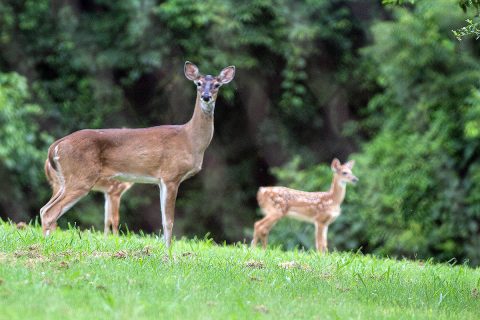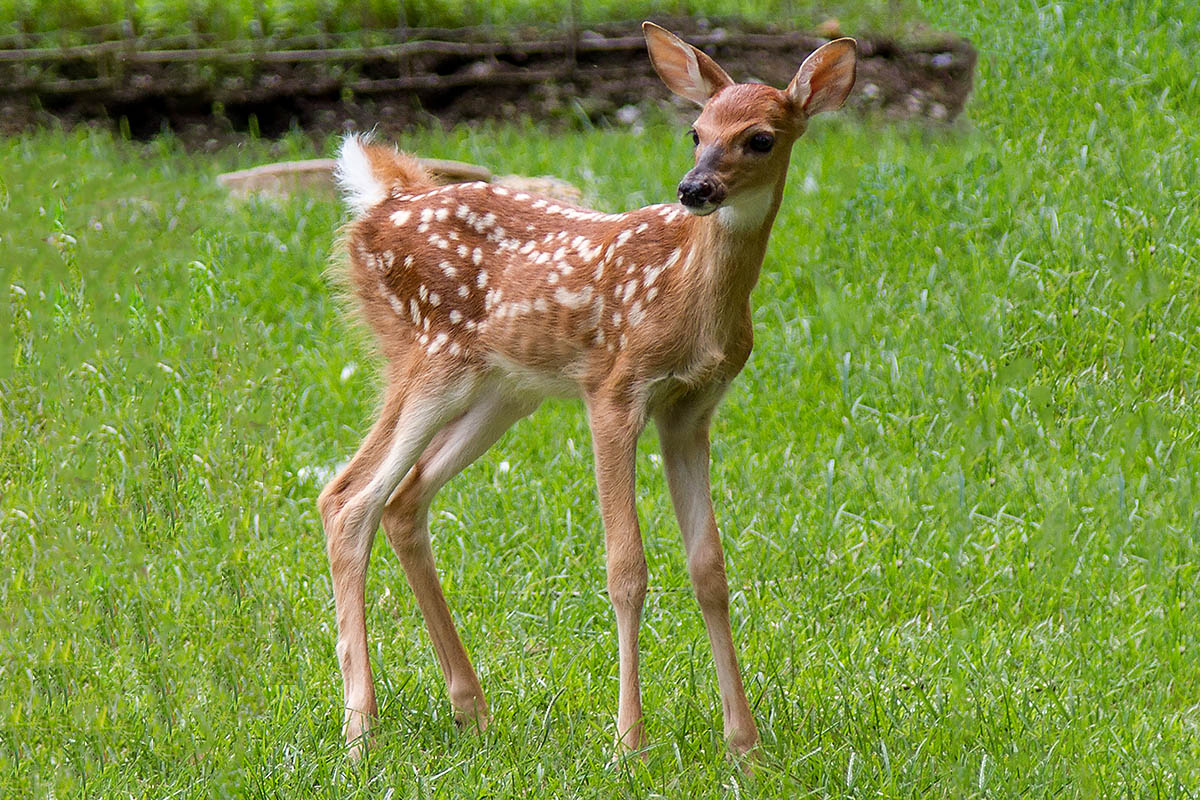Written by Sgt. Patrick Kirby
40th Public Affairs Detachment
 Fort Campbell, KY – It is the season for fawns here on Fort Campbell, as does typically give birth in May and June.
Fort Campbell, KY – It is the season for fawns here on Fort Campbell, as does typically give birth in May and June.
The deer population on Fort Campbell is very dense, especially in the housing areas where hunting is not allowed.
When a doe gives birth its first instinct is to protect the fawn. The doe feeds her young every two to three hours.
Whenever the doe is out in the open with her fawn, the fawn is in danger of attacks from predators. Because she must continue to forage for food, she hides her fawns somewhere safe. Here on Fort Campbell that safe spot often is somewhere near houses in a flower bed or yard.

“We are in their habitat, we encroached on them,” said Gene Zirkle, Fort Campbell Fish and Wildlife program manager, Environmental Division, Directorate of Public Works. “They have been doing this a long time.”
The housing area is a popular birthing spot for many doe because of the lack of predatory species like birds of prey or coyote. Does also have abundant food resources in that area for feeding.
“The does will stay pretty close distance to the fawns, said Brad Wheat, wildlife biologist, Fort Campbell Fish and Wildlife. “The moms can still see or hear their young.”
At birth, fawns have no scent, this is evolutionary a trait to keep predators away. When approached, a fawn’s heart rate rapidly decreases and they hunker down and hide.

Many well-meaning residents will see this as the fawn being abandoned and sick, and take the fawn in, as a pet or take the fawn to Fort Campbell Fish and Wildlife or the veterinarian.
“When you touch them, they aren’t scentless anymore and have a greater rate of predation,” Wheat said.
The problem is when the fawn is moved the doe will not be able to find its baby. The fawn also will imprint on its new mother figure and never be able to be wild again.
“Keeping the wildlife wild is the No. 1 priority,” Zirkle said.
Additionally it is against the law to keep a wild animal.
The best thing to do is just let the fawn be, look at them from a distance and appreciate that the doe feels your yard is a safe area.
“If you see a fawn, leave the fawn,” Zirkle said.



